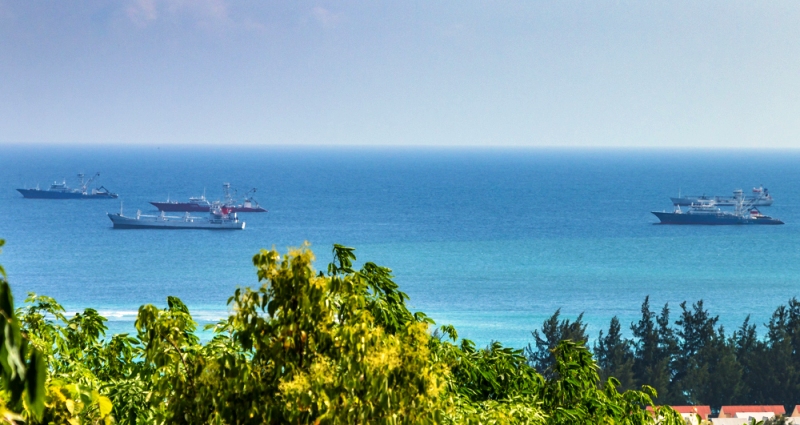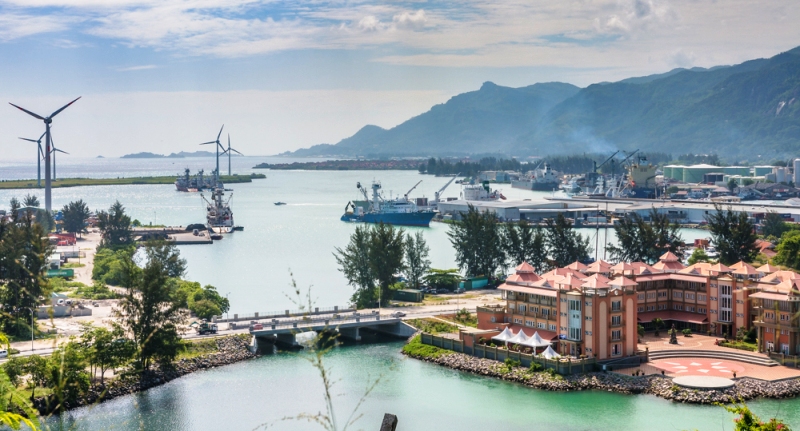SFA updates on yellowfin tuna fishing restrictions |15 December 2017
On October 3, 2017, the Indian Ocean Tuna Commission (IOTC) put into force Resolution 17/01 which supersedes that of 16/01 from January 1, 2017. The resolution is an interim plan for rebuilding the Indian Ocean yellowfin tuna stock in the IOTC area of competence. This is a precautionary measure to reduce fishing pressure on the Indian Ocean yellowfin tuna stock and allow it to recover from its overexploited status.
Different levels of catch reduction is applicable for different fleets, however the Indian Ocean purse seine fleet (Seychelles, European Union and South Korean) are to reduce yellowfin catch level by 15% from the 2014 or 2015 baseline according to Resolution 17/01.
The Seychelles Fishing Authority (SFA) shares an update about the current situation with the Seychelles NATION following the decline in fishing and port activities which began this month. This is evident from the unusual sight of purse seiners currently lined up in Port Victoria.
Currently, 9 out of 13 Seychelles-flagged purse seiners have stopped fishing due to having attained their allocated quota. They terminated all fishing operations on December 1, 2017 and have been ordered by the Authority to call into port the latest December 7. Their support vessels (supply vessels) have been given up to December 15 (today), to return to port.
All 14 Spanish vessels have stopped fishing operations since November 5, 2017. They will be allowed to sail from December 16 but fishing operations can only resume as from January 1, 2018. Consequentially, from December 16 – 31, they will mostly be managing their Fish Aggregating Devices (FADs).
Aside from the decline in purse seine fishing activities, it is expected that the availability of by-catch for export by onshore processors and for use as bait in our artisanal fishery may also be affected.
However, according to the Chief Fisheries Officer at the SFA, Vincent Lucas, Resolution 17/04 which forbids the discard at sea of some by-catch species, unless deemed unfit for human consumption, will come into force as from January 1, 2018. It is therefore expected that more by-catch, including those used as bait by local fishers, will be more readily available as from January 2018.
Mr Lucas adds that in the period of March to June when vessels are operating in the southern part of the Western Indian Ocean and in the Mozambique Channel, bait are indeed scarce. However, at times it is not the unavailability of bait that is of concern, but rather the price it is being sold at or the condition which poses problems. Fishermen often want specific species in a particular condition and at a particular price and sometimes not all of these can be met.
“I believe that there will be more bait available on the local market in 2018 and with a policy on the management of bait from tuna purse seiners currently being drafted by the Ministry of Agriculture and Fisheries, which is expected to come into force during the first quarter of 2018, this should improve bait availability on the local market,” says Mr Lucas.
Speaking about the challenges and future strategies of the implementation of the quota system, Mr Lucas says that “It is clear that we were in uncharted territories since historically, no quota system had been implemented in the Indian Ocean by the IOTC. Therefore, it was a big challenge to monitor catch level for yellowfin tuna near real time. However, these six months have allowed us to identify constraints, such as, late reporting, not reporting according to the agreed standard and suspected underreporting”.
SFA had been working on a protocol to address those constraints and this was expected to be presented to stakeholders on Wednesday this week during the stakeholder meeting which SFA organised with relevant stakeholders. During the same meeting, stakeholders were presented with their quota for 2018, allowing for better management throughout the year, noting that the late allocation of the 2017 quota in July this year, resulted in some difficulties for vessels to manage it properly and remain within catch limits.
Mr Lucas calls for greater collaboration from operators with regard to reporting so as to facilitate the work of the Authority.
“With limited capacity we are dedicating much effort to monitoring while some operators are not collaborating as they should. SFA will ensure penalties are introduced in 2018, and vessels suspected of misreporting will not be allowed to leave port until the Authority is satisfied with their reporting. Such measures will apply only to our 13 flagged vessels. The other fleets, France, Spain and Korea will abide by measures from their respective relevant authority,” says Mr Lucas.
When asked how long the restriction by IOTC will last, Mr Lucas explains that data is to be reviewed in 2019 and based on new stock assessment, a decision will then be taken. If the stock has recovered, then the quota will be removed.
However IOTC is discussing Allocation Criteria and Harvest Control rules and it is therefore very likely that there will be allocation by species and by country in the future. However this is expected to be a long process as discussing eligibility criteria is a complex matter when you have 33 parties with different interests involved.
For now, activities of the four remaining Seychelles-flagged vessels and French purse seiners will continue until their quota is exhausted, probably within the coming two weeks. Fishing activities are expected to resume on January 1, 2018, however the first landings are expected to be towards the end of January or mid-February, noting that purse seine fishing trips are usually between 30 to 40 days.
Reference: SFA
The implementation of the IOTC Resolution 17/01 has led to a decline in fishing and port activities as evidenced by the unusual sight of purse seiners currently lined up in Port Victoria






